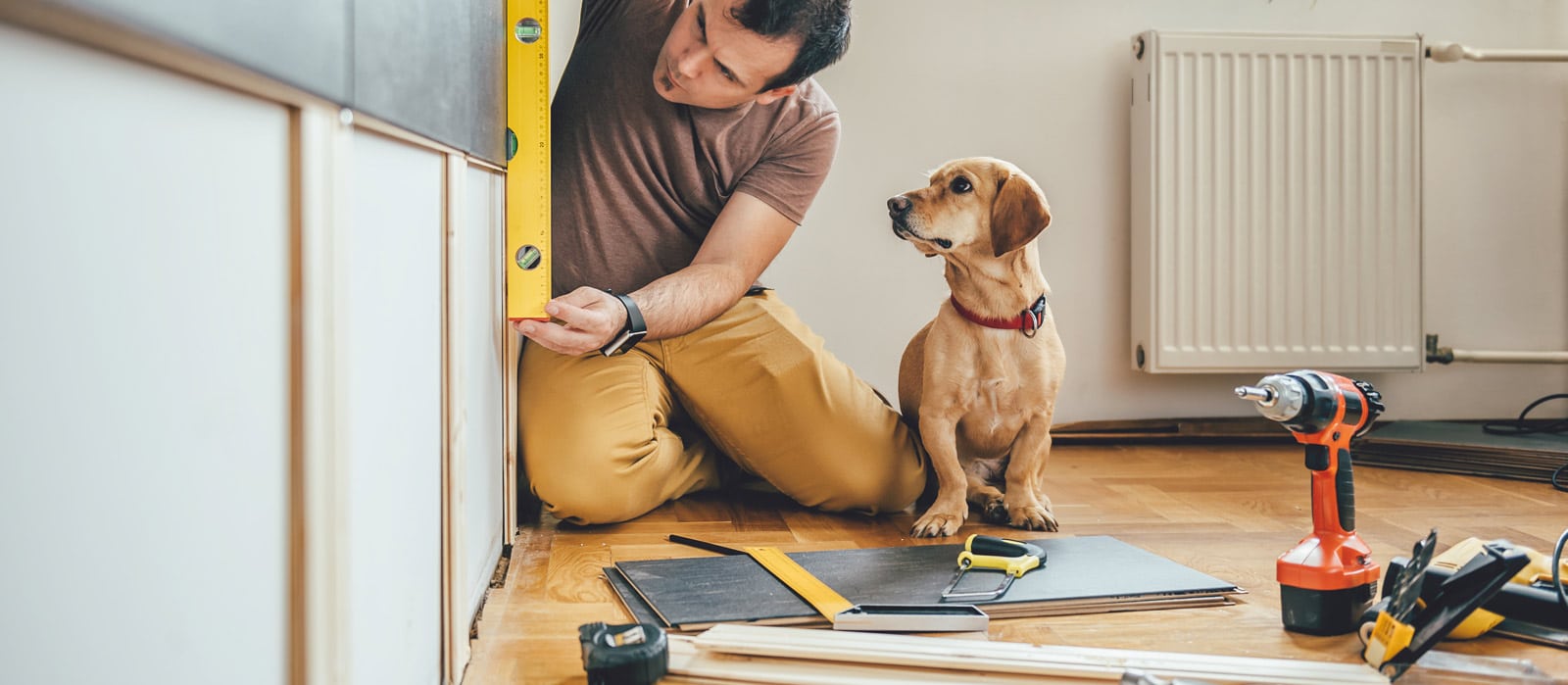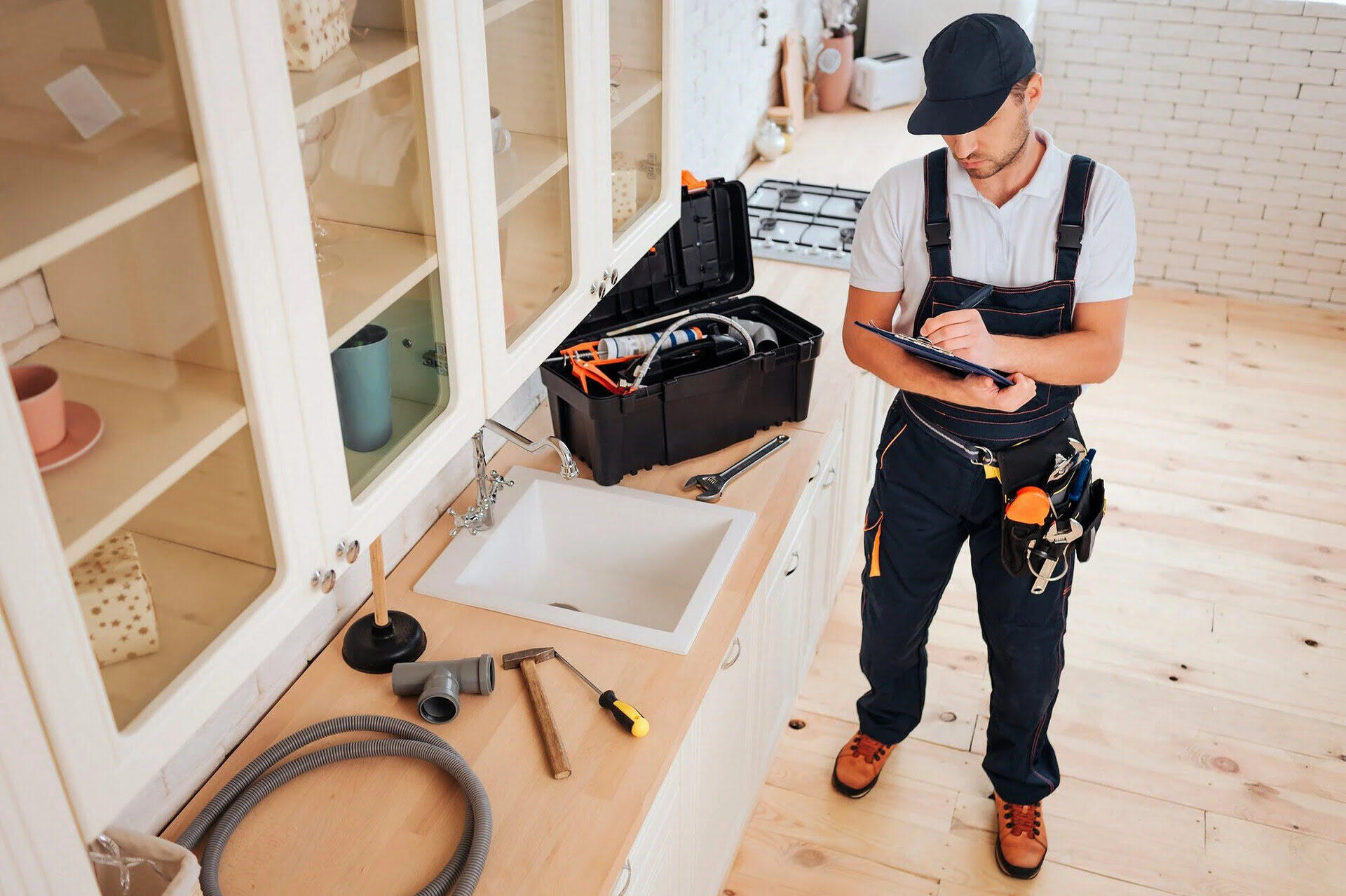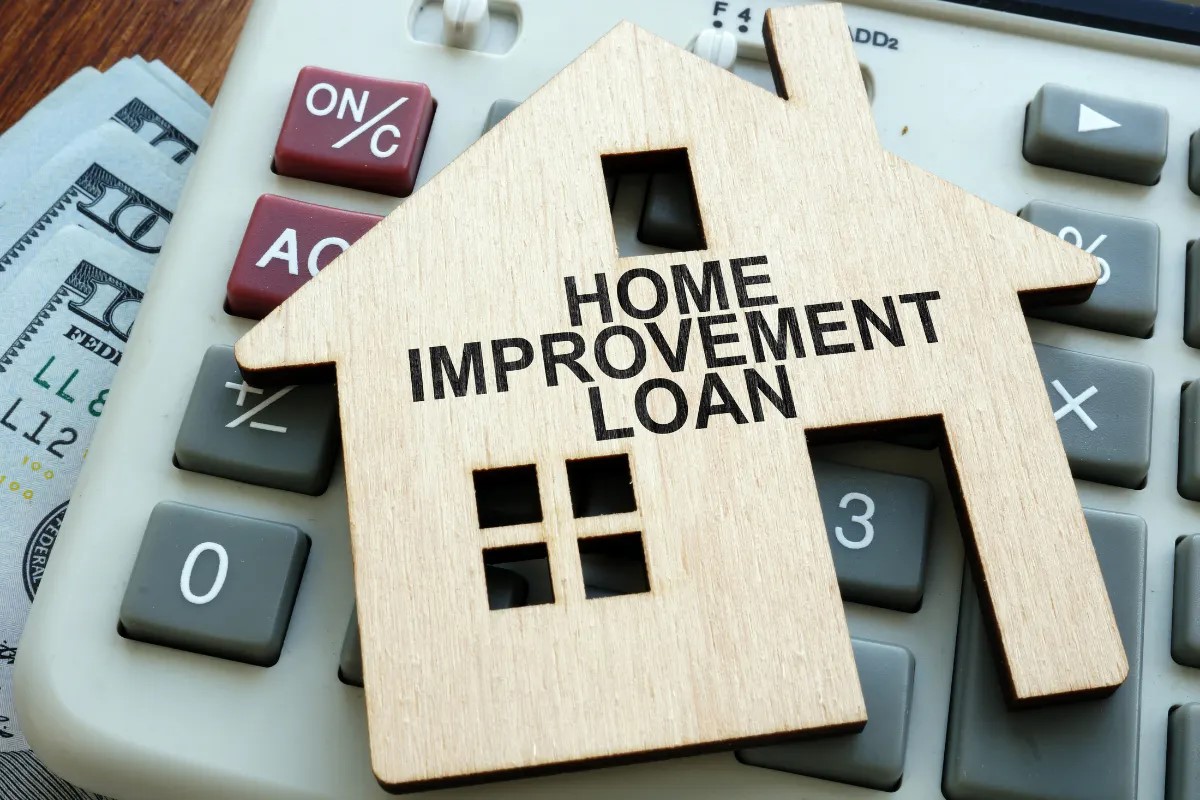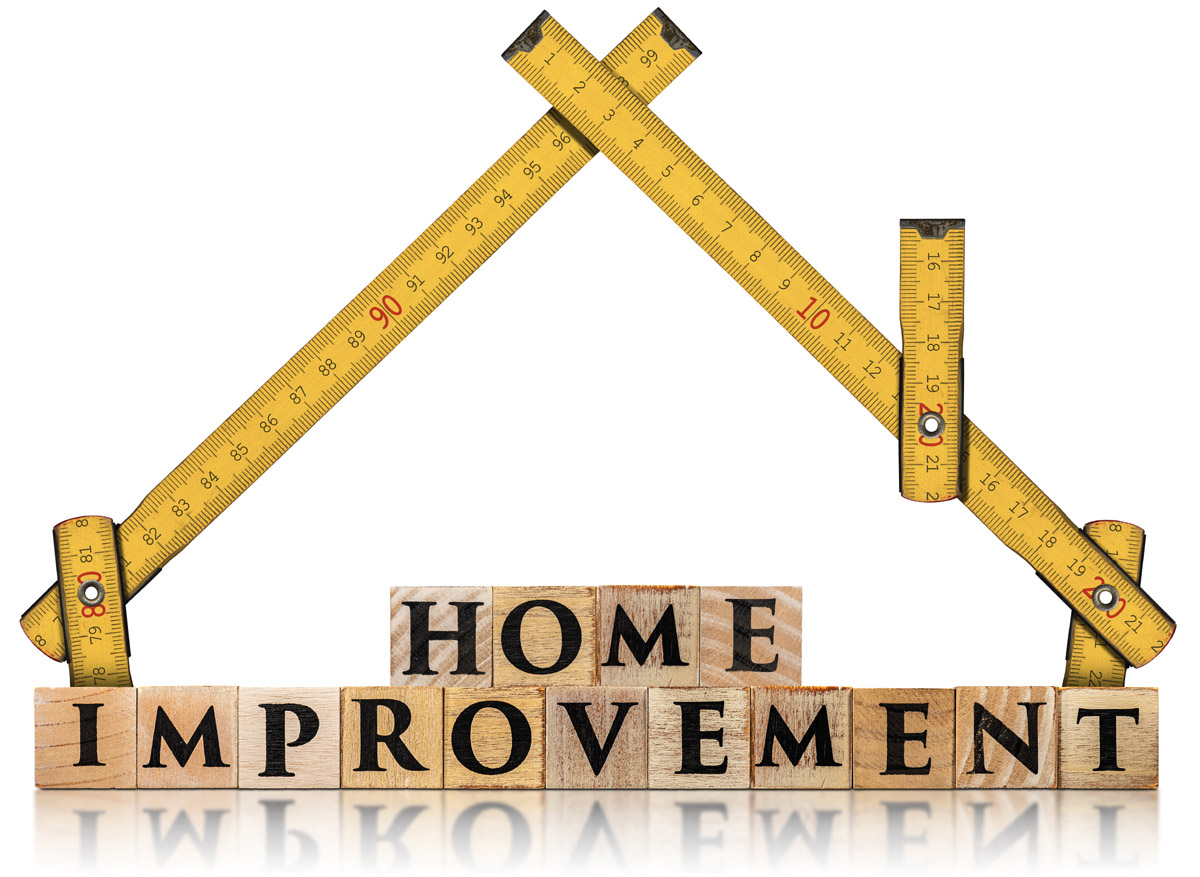Home>Home Maintenance>How To Get Home Repair Loan Without Equity


Home Maintenance
How To Get Home Repair Loan Without Equity
Modified: March 6, 2024
Need a home repair loan but don't have equity? Learn how to get a loan for home maintenance without the need for collateral or equity.
(Many of the links in this article redirect to a specific reviewed product. Your purchase of these products through affiliate links helps to generate commission for Storables.com, at no extra cost. Learn more)
Introduction
When it comes to maintaining and repairing your home, unexpected expenses can often arise. From a leaky roof to a malfunctioning HVAC system, these issues can quickly drain your savings and leave you scrambling for a solution. In such situations, a home repair loan can be a lifeline, providing the funds needed to address the repairs. However, not everyone has the equity in their home to qualify for a traditional home repair loan. Fortunately, there are options available for those without equity.
In this article, we will explore the concept of non-equity home repair loans and how you can secure financing for home repairs without having to rely on the equity in your property.
Let’s dive in and understand how these non-equity home repair loans work and how you can benefit from them.
Key Takeaways:
- Non-equity home repair loans provide accessible financing for homeowners without substantial equity, offering flexibility in addressing urgent repairs. However, they may come with higher interest rates and shorter repayment periods.
- Exploring alternative options such as government programs, personal loans, or contractor financing can help homeowners find the best fit for their financial needs when it comes to home repairs.
Understanding Home Repair Loans
Home repair loans are a form of financing that homeowners can utilize to fund necessary repairs and improvements to their properties. These loans are specifically designed to help homeowners address structural issues, make essential repairs, or undertake renovations to maintain the value and integrity of their homes.
Traditional home repair loans typically rely on the equity in the property. Lenders offer loans based on a percentage of the home’s appraised value, which serves as collateral for the loan. However, not everyone has built up sufficient equity or may not have any equity at all, making it difficult to qualify for these types of loans.
Non-equity home repair loans, on the other hand, allow homeowners to obtain financing for repairs without relying on the value of their property. These loans are often offered by lenders or financial institutions who understand that not everyone has substantial equity but still need assistance in tackling their home repair projects.
The key distinction between traditional home repair loans and non-equity home repair loans lies in the collateral. While traditional loans use the home’s equity as collateral, non-equity loans may require alternative forms of security, such as a co-signer, a higher interest rate, or a shorter repayment period.
It is important to note that non-equity home repair loans may come with different terms and conditions compared to traditional loans. Interest rates may be higher, and the repayment period may be shorter. However, they provide a viable solution for homeowners who don’t have enough equity in their properties to qualify for a conventional home repair loan.
Now that we have a basic understanding of home repair loans and the difference between traditional and non-equity loans, let’s explore the various types of non-equity home repair loans available.
Types of Home Repair Loans
Non-equity home repair loans come in different forms, each with its own set of benefits and considerations. Let’s take a closer look at some of the most common types of non-equity home repair loans:
- Personal Loans: A personal loan is a common option for homeowners seeking financing for home repairs. These loans are typically unsecured, meaning they don’t require collateral. Personal loans can be obtained from banks, credit unions, or online lenders. The loan amount, term, and interest rate will depend on your creditworthiness and the lender’s criteria.
- Credit Cards: Homeowners may also choose to use credit cards to fund their home repair projects. This option can be convenient if you already have a credit card with a sufficient credit limit. However, it’s crucial to consider the high-interest rates associated with credit cards. If you plan to use a credit card for home repairs, it’s advisable to explore low-interest or 0% introductory APR cards to minimize interest costs.
- Government Programs: Some government programs offer home repair loans or grants to qualifying individuals. For example, the Federal Housing Administration (FHA) offers a Title I Property Improvement Loan Program, which provides loans for specific home improvements. Additionally, local or state housing agencies may have programs in place to help homeowners with repairs or renovations.
- Home Improvement Loans: Home improvement loans are specifically designed for funding renovation projects or making substantial repairs to your property. These loans can be obtained from banks, credit unions, or specialized lenders. The loan terms, interest rates, and requirements will vary depending on the lender and the scope of your project.
- Community Development Programs: Some communities or nonprofit organizations offer home repair loans or grants to homeowners in specific areas or with low incomes. These programs aim to support home repairs and improvements in underserved communities and can provide financial assistance for qualified individuals.
It is important to carefully evaluate the options available to you and consider factors such as interest rates, repayment terms, and eligibility requirements when choosing a non-equity home repair loan. Understanding the nuances of each loan type will help you make an informed decision that aligns with your specific needs and financial situation.
Now that we have explored the different types of non-equity home repair loans, let’s delve into the eligibility criteria for securing these loans.
Non-Equity Home Repair Loans
Non-equity home repair loans offer a viable solution for homeowners who don’t have sufficient equity in their properties to qualify for traditional home repair loans. These loans are designed to provide financial assistance for necessary repairs without relying on the value of the home as collateral.
Unlike traditional home repair loans, non-equity loans may require alternative forms of security or have different terms and conditions. Here are a few key points to understand about non-equity home repair loans:
- No Collateral Required: Non-equity loans typically do not require homeowners to leverage the equity in their properties as collateral. This makes these loans accessible to a wider range of homeowners, regardless of their equity situation.
- Alternative Forms of Security: Since non-equity loans do not rely on the home’s value as collateral, lenders may require alternative forms of security. This can include a higher interest rate, a co-signer with good credit, or a shorter repayment period. These factors help mitigate the lender’s risk in providing financing without traditional collateral.
- Higher Interest Rates: Non-equity home repair loans may come with higher interest rates compared to traditional home repair loans. The increased interest rates serve as a way for lenders to compensate for the higher risk associated with these loans. It is essential to carefully consider the interest rates and compare them to other loan options to ensure you can manage the monthly payments.
- Shorter Repayment Period: Non-equity loans may also have shorter repayment periods compared to traditional loans. This is another risk mitigation measure for lenders, as a shorter repayment period reduces the potential exposure to default or other unforeseen circumstances. Make sure to factor in the shorter repayment period when assessing your financial ability to repay the loan.
Non-equity home repair loans can provide a lifeline for those who need to address urgent repairs or improvements in their homes. Whether it’s a leaky roof, a plumbing issue, or a malfunctioning appliance, these loans can help homeowners attend to these issues promptly and avoid further damage or safety concerns.
Next, let’s take a look at the eligibility criteria for obtaining a non-equity home repair loan.
Eligibility for Non-Equity Home Repair Loans
While the eligibility criteria for non-equity home repair loans may vary depending on the lender and the specific loan program, there are some common factors that lenders typically consider when assessing applications. Here are some key eligibility criteria you should be aware of when seeking a non-equity home repair loan:
- Credit Score: Lenders will typically review your credit score to assess your creditworthiness and determine the interest rate for the loan. While the specific credit score requirements may vary, a higher credit score generally improves your chances of securing a loan and obtaining favorable terms.
- Income and Employment: Lenders will evaluate your income and employment stability to ensure that you have the financial means to repay the loan. They may request documents such as pay stubs, tax returns, or bank statements to verify your income and employment status. Demonstrating a stable and sufficient income will strengthen your loan application.
- Debt-to-Income Ratio: Lenders will assess your debt-to-income ratio, which measures the percentage of your monthly income that goes towards debt payments. Ideally, a lower debt-to-income ratio indicates your ability to comfortably manage additional loan payments. Lenders typically prefer a ratio below 43%.
- Residency and Citizenship: You will need to provide proof of residency and citizenship or legal residency status, depending on the lender’s requirements. Typically, lenders will require a valid government-issued ID, such as a driver’s license or passport.
- Loan Amount and Purpose: Some lenders may have restrictions on the loan amount you can borrow, as well as the specific types of repairs or improvements that can be financed. Ensure that your intended use of the loan aligns with the lender’s guidelines and restrictions.
Keep in mind that these are general eligibility criteria, and specific lenders or loan programs may have additional requirements. It’s essential to carefully review the lender’s guidelines and eligibility criteria before submitting your loan application.
Next, we will explore the application process for non-equity home repair loans.
How to Apply for a Non-Equity Home Repair Loan
Applying for a non-equity home repair loan involves a series of steps to ensure that you meet the lender’s criteria and increase your chances of approval. Here is a general guide on how to apply for a non-equity home repair loan:
- Evaluate Loan Options: Research and compare different lenders or loan programs that offer non-equity home repair loans. Consider factors such as interest rates, loan terms, eligibility criteria, and customer reviews. This will help you find the most suitable option for your specific needs.
- Gather Required Documents: Prepare the necessary documents and information that will be required during the application process. This may include proof of income, bank statements, tax returns, identification, and any other documents specified by the lender. Having these documents ready in advance will streamline the application process.
- Complete the Loan Application: Fill out the loan application form provided by the lender. Provide accurate and detailed information to ensure a smooth processing of your application. Double-check your application for any errors or missing information before submitting it.
- Submit Supporting Documents: Along with the loan application, submit the required supporting documents as specified by the lender. This may include income verification, proof of residence, identification, and any additional documents requested by the lender to assess your eligibility.
- Wait for Loan Approval: After submitting your application and supporting documents, the lender will review your information and make a decision. The approval process may take some time, so be patient during this stage. Stay in touch with the lender for any updates or additional information they may require.
- Review and Sign Loan Agreement: If your loan application is approved, carefully review the loan agreement provided by the lender. Pay close attention to the terms and conditions, including the interest rate, repayment period, and any fees associated with the loan. If everything looks acceptable, sign the loan agreement and return it to the lender.
- Receive Loan Funds: Once the loan agreement is signed and returned, the lender will process the loan and disburse the funds to your designated account. Be sure to follow the lender’s instructions for receiving the loan funds, and make note of the repayment terms and due dates.
Remember, every lender may have their own specific application process, so it’s important to carefully follow their instructions and provide accurate information. Pay attention to any communication from the lender as it may include requests for additional information or clarification.
Now that we have covered the application process, let’s explore some tips for increasing your chances of getting approved for a non-equity home repair loan.
Consider applying for a personal loan or a home improvement loan if you don’t have equity. Look for lenders that offer these types of loans and have flexible eligibility requirements.
Tips for Getting Approved for a Non-Equity Home Repair Loan
Securing approval for a non-equity home repair loan requires careful preparation and consideration of various factors. Here are some essential tips to help increase your chances of getting approved:
- Check your credit score: Before applying for a loan, review your credit report and ensure that it is accurate. A higher credit score can improve your chances of approval and help you negotiate favorable loan terms. If your credit score is lower than desired, take steps to improve it before applying.
- Prepare a detailed budget: Create a comprehensive budget that outlines your income, expenses, and existing debts. Lenders want to see that you have a clear understanding of your financial situation and have the ability to manage additional loan payments. Be prepared to provide supporting documentation to verify your income and expenses.
- Demonstrate stable employment: Lenders prefer borrowers with stable employment and a consistent income. If you have been in your current job for a significant period, provide the necessary documentation to showcase your employment history. This can include pay stubs, employment contracts, or tax returns.
- Consider a co-signer: If you have a lower credit score or limited income, having a co-signer with a strong credit history and income can increase your chances of approval. A co-signer acts as a guarantor for the loan and shares equal responsibility for repayment.
- Compare loan options: Research different lenders and loan programs to find the best non-equity loan option for your needs. Compare interest rates, loan terms, and customer reviews to ensure you choose a reputable lender with favorable terms.
- Provide accurate and complete information: When completing the loan application, provide accurate and detailed information. Inaccurate or incomplete information can delay the approval process or even result in a denial. Double-check your application for errors or missing information before submitting it.
- Minimize existing debts: Lenders consider your debt-to-income ratio when assessing your loan application. Paying down existing debts, such as credit card balances or personal loans, can lower your debt-to-income ratio and improve your chances of approval.
- Have a clear purpose for the loan: Clearly articulate the purpose of the loan and how it will be used for home repairs. Provide estimates or quotes from reputable contractors or service providers to support your loan application.
- Maintain open communication with the lender: If the lender requires additional information or documentation, respond promptly and provide the requested materials. Open and timely communication helps streamline the loan approval process.
By following these tips, you can increase your eligibility and improve your chances of getting approved for a non-equity home repair loan. Remember to carefully review the loan terms and conditions before accepting an offer, and only borrow what you can comfortably repay.
Now, let’s consider the pros and cons of non-equity home repair loans.
Pros and Cons of Non-Equity Home Repair Loans
Non-equity home repair loans offer homeowners without substantial equity in their properties the opportunity to obtain financing for repairs and improvements. While these loans can be a valuable resource, it’s important to consider the pros and cons before deciding if they are the right fit for your needs. Let’s explore the advantages and disadvantages of non-equity home repair loans:
Pros:
- Accessible to homeowners without equity: Non-equity home repair loans provide an option for homeowners who don’t have built-up equity in their properties. This allows a wider range of individuals to access financing for necessary repairs or improvements.
- No risk to home equity: Since non-equity loans do not rely on the home’s value as collateral, there is no risk of losing equity in the property even if you default on the loan. This provides added peace of mind for homeowners who may be concerned about the potential loss of equity.
- Faster approval process: Non-equity loans often have a faster approval process compared to traditional home repair loans. This is because the lender evaluates the borrower’s creditworthiness and financial stability rather than relying solely on the value of the property.
- Flexible use of funds: Non-equity home repair loans can typically be used for a variety of repairs and improvements, giving homeowners the flexibility to address specific issues or make desired upgrades.
Cons:
- Higher interest rates: Non-equity home repair loans generally come with higher interest rates compared to traditional home loans. This is because lenders may perceive these loans as riskier due to the absence of collateral. It’s important to carefully consider the interest rate and assess the affordability of the loan before committing to it.
- Shorter repayment period: Non-equity loans may have shorter repayment periods compared to traditional loans. This means higher monthly payments, potentially putting a strain on your finances. Ensure that you can comfortably afford the monthly payments within the shorter timeframe before taking out the loan.
- Potential for higher fees: Lenders may impose higher fees or charges on non-equity loans to mitigate the risk associated with these loans. It’s essential to review the loan terms and conditions carefully to understand all the fees involved and factor them into your cost calculations.
- Tight eligibility criteria: Non-equity home repair loans may have stricter eligibility criteria compared to traditional loans. Lenders may require a higher credit score or additional documentation to demonstrate your ability to repay. Be sure to review the eligibility requirements upfront to determine if you meet the necessary criteria.
Considering the pros and cons of non-equity home repair loans will help you make an informed decision about whether this financing option is right for you. Take the time to assess your financial situation, evaluate the terms and conditions, and explore other alternatives if needed.
Next, let’s discuss some alternatives to non-equity home repair loans that you may consider.
Alternatives to Non-Equity Home Repair Loans
While non-equity home repair loans can be a viable option for homeowners without sufficient equity in their properties, it’s important to explore alternative financing options to determine which best suits your needs. Here are some alternatives to consider:
- Home Equity Loans or Lines of Credit: If you have built up equity in your home, a home equity loan or line of credit can provide a lower interest rate compared to non-equity loans. These options allow you to borrow against the equity in your home and can provide larger loan amounts and longer repayment periods.
- Government Assistance Programs: Research government programs or grants available in your area that provide financial assistance for home repairs or improvements. These programs are typically aimed at low-income homeowners or specific community development initiatives.
- Savings or Emergency Funds: Consider tapping into your savings or emergency funds to cover the cost of repairs. While this option may deplete your savings, it eliminates the need for taking on additional debt and incurring interest charges.
- Personal Loans from Family or Friends: If you have a trusted family member or friend willing to lend you money, a personal loan from them may offer more flexible terms and lower interest rates compared to traditional lenders. However, it’s essential to approach this option with caution and maintain clear communication and expectations with the lender.
- Credit Cards: While credit cards can come with high-interest rates, they can be a convenient option for smaller home repair expenses. If you have a low-interest or 0% introductory APR card, utilizing it for the repairs and promptly paying it off can help minimize interest costs.
- Contractor Financing: Some contractors or home improvement companies offer financing options specifically for their services. These financing programs often come with promotional interest rates or flexible repayment terms. However, be sure to carefully review the terms and conditions, as the interest rates may increase after the promotional period.
Each alternative financing option has its own set of advantages and considerations. When exploring these options, weigh factors such as interest rates, repayment terms, eligibility requirements, and your overall financial situation. Choose the option that aligns best with your needs and suits your affordability and long-term financial goals.
Now that we have examined alternatives to non-equity home repair loans, let’s wrap up our discussion.
Conclusion
Home repairs and maintenance are a part of homeownership, and unexpected expenses can often arise. While traditional home repair loans rely on the equity in your property, not everyone has built up sufficient equity to qualify for these loans. That’s where non-equity home repair loans come into play. These loans offer an option for homeowners without substantial equity to obtain financing for necessary repairs or improvements.
Non-equity home repair loans provide accessibility and flexibility for homeowners facing repair needs. They are accessible to a wider range of individuals, as they do not require the home’s equity as collateral. Instead, alternative forms of security or higher interest rates may be required.
When applying for a non-equity home repair loan, it’s important to carefully evaluate loan options, gather the required documents, and complete the loan application accurately. Meeting the eligibility criteria, such as having a stable employment history, good credit score, and demonstrating the ability to repay the loan, increases the chances of approval.
While non-equity home repair loans have advantages, such as faster approval processes and flexibility in using the funds, they also come with considerations. These include higher interest rates, shorter repayment periods, and potentially higher fees. It’s crucial to weigh the pros and cons and assess your financial situation before committing to a loan.
If a non-equity home repair loan doesn’t suit your needs, there are alternatives to consider. Home equity loans, government assistance programs, personal loans from family or friends, credit cards, and contractor financing are among the alternative financing options available. Each option has its own set of advantages and considerations, and it’s important to choose the one that aligns best with your financial circumstances and goals.
Remember, before making a decision, thoroughly research and compare lenders, loan terms, and interest rates. Consider consulting with a financial advisor to help you make an informed choice about the best financing option for your specific situation.
Ultimately, whether you choose a non-equity home repair loan or an alternative financing option, the key is to address necessary repairs promptly and responsibly. By taking proactive steps to maintain your home, you can ensure the longevity and value of your property.
Now that you have a better understanding of non-equity home repair loans and alternative options, you can make informed decisions to tackle your home repair needs with confidence.
Frequently Asked Questions about How To Get Home Repair Loan Without Equity
Was this page helpful?
At Storables.com, we guarantee accurate and reliable information. Our content, validated by Expert Board Contributors, is crafted following stringent Editorial Policies. We're committed to providing you with well-researched, expert-backed insights for all your informational needs.













